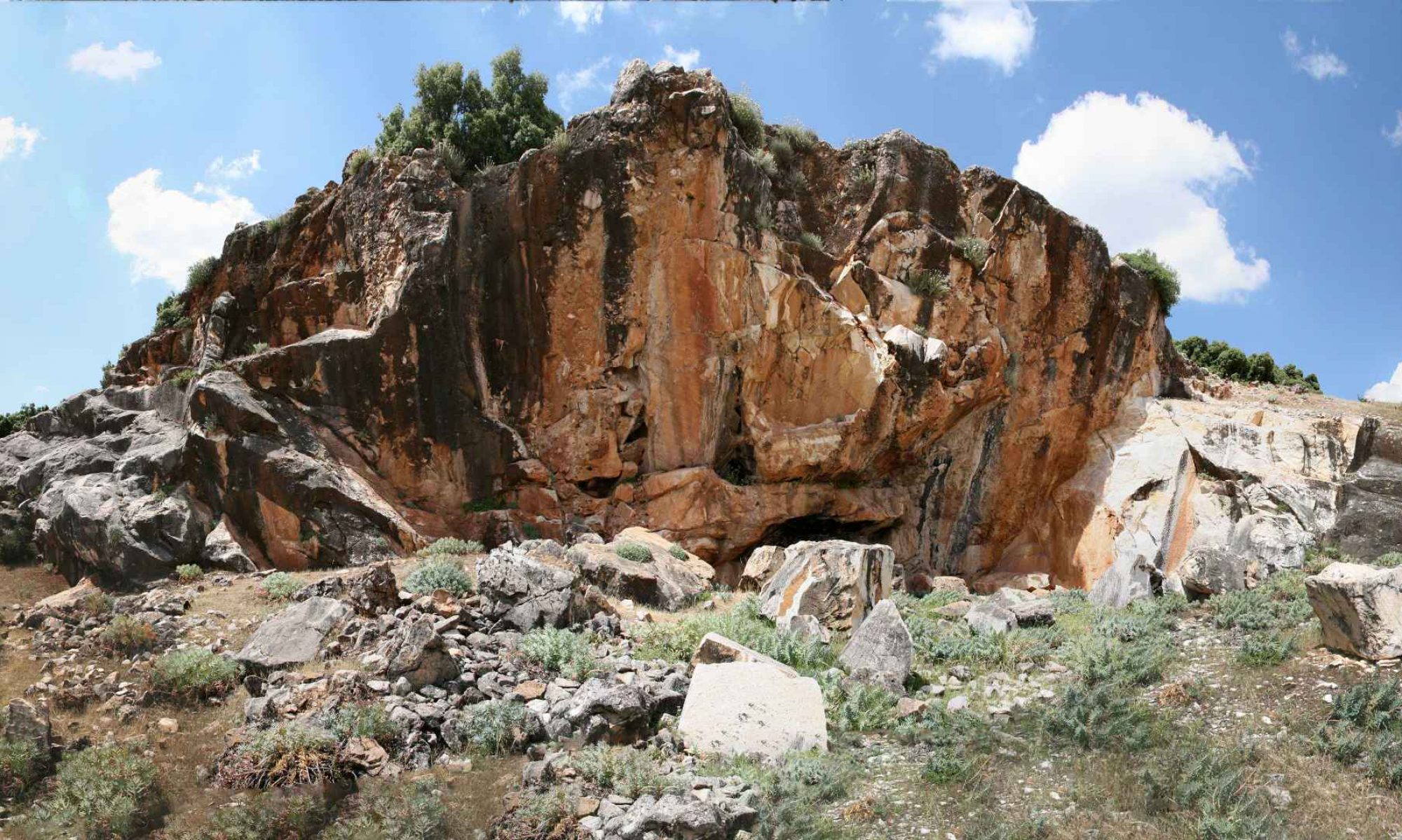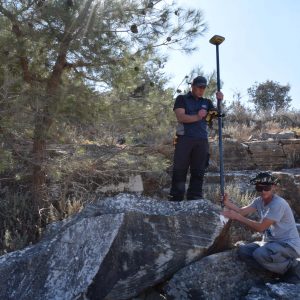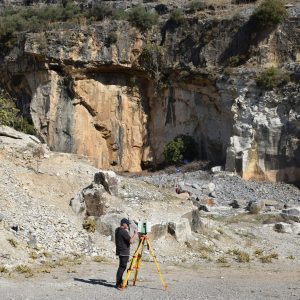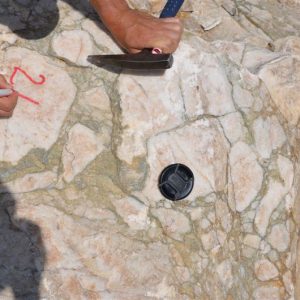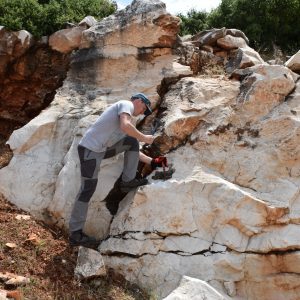During the four seasons of fieldwork, over 300 ancient marble quarries were surveyed and documented in the following four ancient regions:
- Phrygia, quarries of Dokimeion and Altıntaş
- Caria, quarries of Aphrodisias and Göktepe
- Propontis, quarries of Prokonnesos
- Ionia, quarries of Ephesos
Fieldwork consisted of two main components:
1. GEOARCHAEOLOGICAL INVESTIGATIONS AND MAPPING
To locate and record as many quarries as possible, results of previously published fieldwork as well as satellite imagery were used. The mapping of the quarries was done with a total station and GPS-equipment, although the most important and useful tool for this kind of documentation was a 3-D laser scanner. The scanner allowed for an estimation of the volume of stone extracted and the creation of accurate three-dimensional models for forty quarries in total. Volumetric measurements were carried out according to DTM tin surface extracted from laser scans and reference plane. Archaeological and geological investigations consisted of studying all relevant features associated with the ancient quarries, such as the size of the quarry, the quality and colour of the marble according to geological parameters. Archaeological evidence for ancient extraction documented wedge holes and pick marks, the presence of prefabricated blocks, spoil heaps, slipways, and other associated facilities, as well as the locations of the samples collected for the analysis.
2. SAMPLING PROGRAMME
To provide mineralogical, petrographic and geochemical characteristics of white and grey marbles extracted in the quarries surveyed, marble sampling was carried out under control of the representative of the MTA, Mr. Demir Erkanol. Over 1200 samples from different parts of the ancient quarries were collected for analytical study: 152 from the quarries in Göktepe, 173 from Dokimeian quarries, 239 from Aphrodisias (from both the so-called City and Regional Quarries), 138 from Altıntaş, 305 from Prokonnesos and finally 237 from the quarries around the ancient city of Ephesos.
The fieldwork conducted as part of the Marmora Asiatica project has added significant new information to previous studies. At present, over fifty new, individual ancient quarries have been identified. Their discovery demonstrates the viability of using the method of extensive field survey for locating new quarries and corroborates the fact that not all ancient quarries have been discovered. This point is of great significance for the existing scientific databases used for identification in the provenance of in ancient marble artefacts. A complete database of marble sources is still incomplete, and it can be assumed that other white and coloured sources of marble remain undiscovered. In this regard, the preliminary results of petrographic and geochemical analyses add important new data.
Ongoing intensive modern exploitation in the locations of ancient quarries has resulted in significance loss to these sites, adding special urgency to our project; geological and archaeological documentation, especially the 3-D scanning, has been especially crucial in this respect. Quarries subject to comprehensive scanning include: ten in Göktepe, five in Dokimeion, six in Aphrodisias, eight in Altıntaş, four in Prokonnesos and seven in Ephesos.
